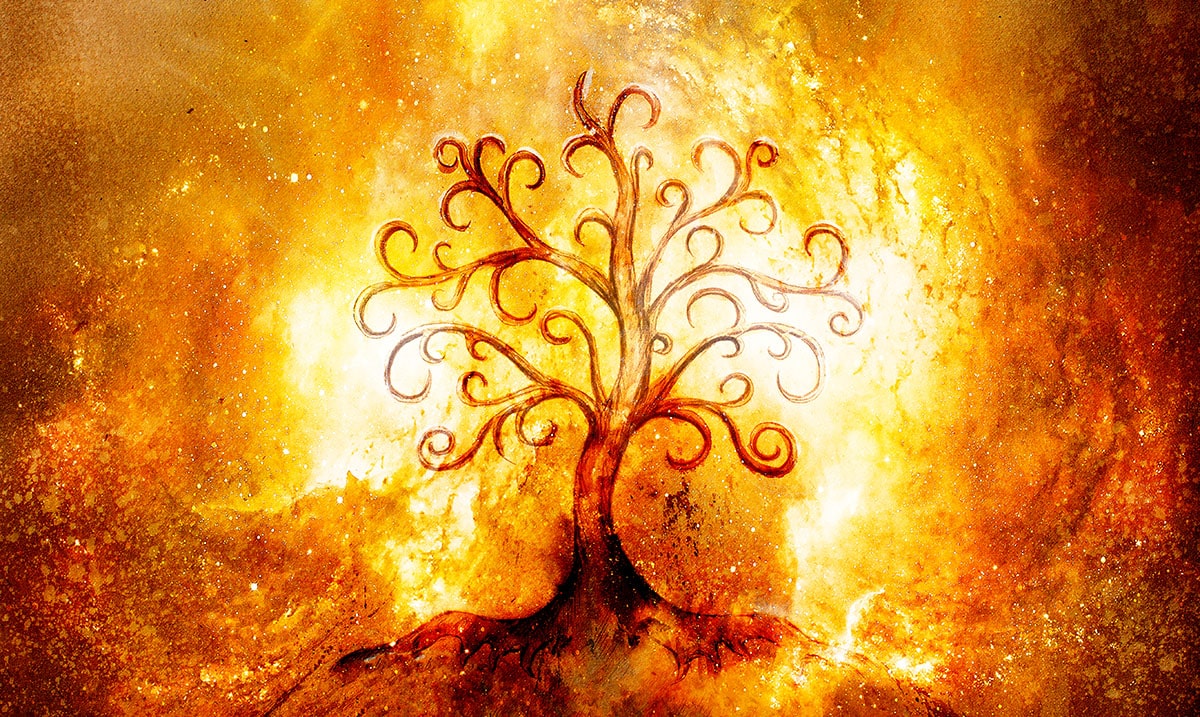While we might see trees just about everywhere most people never stop to consider all the things that can be going on within them. Sure, they’re ‘alive’ but just how similar to ‘us’ are they?
According to Peter Wohlleben they are capable of so much more than most of us would ever want to give them credit for. Wohlleben has a very deep understanding of trees and has researched them for quite some time. Throughout the years he has studied the way they use water, how they ‘move’, and so much more.
After publishing his book ‘The Hidden Life of Trees: What They Feel, How They Communicate,’ he really began making headlines and with good reason. According to Smithsonian Magazine trees can build connections with one another that could be similar to that of couples who have been together for years on end. They go through struggles and are quite complex in a lot of different ways.
He actually told Richard Grant from Smithsonian Magazine as follows on trees and their ‘feelings/connections’:
“They are very considerate in sharing sunlight, and their root systems are closely connected. In cases like this, [referring to two specific trees that he showed to Grant] when one dies, the other usually dies soon afterward, because they are dependent on each other.”
“All the trees here, and in every forest that is not too damaged, are connected to each other through underground fungal networks. Trees share water and nutrients through these networks and also use them to communicate. They send distress signals about drought and disease, for example, or insect attacks and other trees alter their behavior when they receive these messages.”
“I don’t think trees have a conscious life, but we don’t know.”
“We must at least talk about the rights of trees. We must manage our forests sustainably and respectfully, and allow some trees to grow old with dignity, and to die a natural death.”
While all of that might sound a bit crazy, research does back it up. The fungal networks he was referring to are usually called mycorrhizal networks and are quite real. Basically very fine roots join together with microscopic fungal filaments and form links that make up this ‘network.’
Back in 2016 Wohlleben wrote an article for The Telegraph and part of it goes as follows:
But about 20 years ago, I began to organize survival training and log-cabin tours for tourists. In conversations with many visitors, my view of the forest changed.
Visitors were enchanted by crooked, gnarled trees I would previously have dismissed because of their low commercial value. I began to notice bizarre root shapes, peculiar growth patterns and mossy cushions on bark. Suddenly, I was aware of countless wonders I could hardly explain, even to myself. At the same time, RWTH Aachen University began conducting scientific research programs in the forest I manage.
During this research, many questions were answered, but many more emerged. I will never stop learning from trees, but even what I have learned so far under their leafy canopy exceeds anything I could ever have dreamt of.
Years ago, I stumbled across a patch of strange-looking mossy stones in one of the preserves of old beech trees in the forest I manage. Carefully, I lifted the moss on one and found tree bark. These were not stones, after all, but old wood; it was obviously attached to the ground in some way. I scraped away some of the bark until I got down to a greenish layer. This indicated the presence of chlorophyll, which makes new leaves green: this piece of wood was still alive! I suddenly noticed that the remaining “stones” were arranged in a circle. I had stumbled on the gnarled remains of an enormous ancient tree stump. The interior had rotted long ago – a clear indication that the tree must have been felled at least four or five hundred years earlier. But how could the remains have clung on to life for so long? It was clear that the surrounding beeches were pumping sugar to the stump to keep it alive.
Trees share food with their own species for the same reasons as human communities: there are advantages to working together. On its own, a tree cannot establish a consistent local climate. It is at the mercy of wind and weather. But together, many trees create an ecosystem that moderates extremes of heat and cold, stores a great deal of water and generates a great deal of humidity. And in this protected environment, trees can live to be very old.
To get to this point, the community must remain intact. If every tree were looking out only for itself, then quite a few would never reach old age. Regular fatalities would result in many large gaps in the tree canopy, which would make it easier for storms to get inside the forest and uproot more trees. The heat of summer would reach the forest floor and dry it out. Every tree, therefore, is valuable to the community and worth keeping around for as long as possible.
What do you think about all of this? I for one find it to be truly fascinating and hope that in the future we come to understand these amazing beings in better ways. While they do so much for us, we are failing them even if they are not quite as present as we would hope they could be. For more information on all of this please feel free to check out the video below.
Sources:
https://www.telegraph.co.uk/news/0/do-trees-have-feelings-too-one-expert-says-they-do/
https://www.smithsonianmag.com/science-nature/the-whispering-trees-180968084/
https://www.eurekalert.org/pub_releases/2018-04/au-tan042018.php

